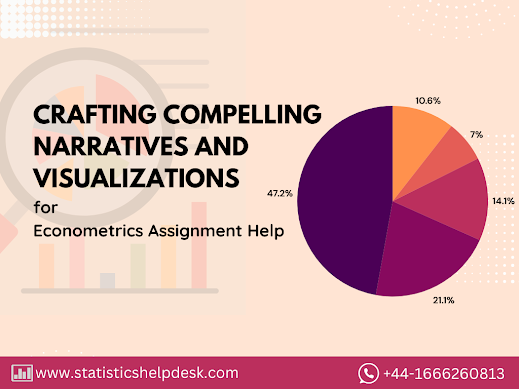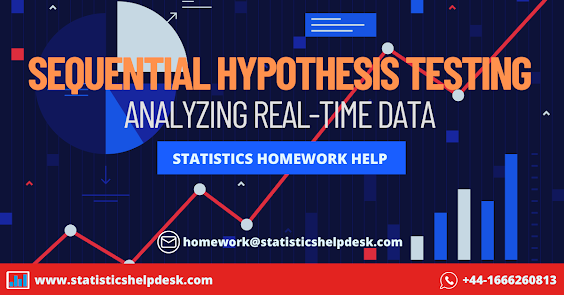Who in their student life has not experienced frustration when it comes to completing their statistics homework? It goes without saying that important subjects like statistics are worth learning, but often feels like an uphill battle. Topics such as probability, data analysis, regression, and hypothesis testing are not something that can be learned in a day. It comes as no shock that students may begin to wonder “Is it a good idea to have someone help or even do my statistics homework?”
It is not about running away from your responsibilities and seeking an easy way out. It is about trying to gain assistance when needed, while still being able to learn efficiently. Ok, what rationality can be behind using this as a clever strategy, and why, in some cases, it turns into a learning block?
1. Understanding the Common Challenges in Statistics
Statistics is a discipline that entails the use of logical thinking and mathematics. It is important to understand working with numbers, data analysis and possess adequate ability to perform correct computations using formulas. Here are some of the main reasons why statistics can be tough:
- Complex Formulas and Theories: Statistics is a process that uses formulas which are usually complex and not straightforward. Some of the areas such as variance, standard deviation, and correlation coefficients might give a feeling like the alphabets and numbers are intermingled in a labyrinth.
- Data Analysis and Interpretation: Calculations are only part of the problem; understanding what the results mean is as relevant as the calculations. The challenging part for students is to extract usable information from a raw data.
- Increased Pressure to Perform: High academic standards also mean high pressure. Most learners find themselves over-burdened with vast course syllabus and fail to fully understand each topic in detail.
Whenever they experience all these challenges cumulatively, they seek for help. Getting help with statistics homework would also mean that what would otherwise pose as difficulties can become learning opportunities for the students.
2. Building a Firm Base with Expert Help
Statistics builds on itself, which means lack of the vital basics makes it extremely difficult to grasp advance concepts. Looking for someone to help with homework is not shirking your responsibility; it is a method of building a strong foundation of statistics. An expert by your side boosts morale and helps to clear doubts as and when needed.
A statistician or an expert with a deep understanding of statistics can assist in simplifying complex concepts in the form of easy processes. As you take assistance in the form of one-to-one tutoring or homework help, you gain valuable insights and perspectives that you could have omitted, or struggle to learn on your own.
3. A Smart Tactic: Using Help to Deepen Your Understanding
Suppose you were putting all your effort into doing complicated homework on statistics by yourself. If you’re not exactly clear about what you’re doing, you will probably spend hours running around in circles. However, you can simply contact us through our website chat support, email or whatsapp and say “Do my statistics homework”. Our Expert help is valuable because the correct technique can be explained from the beginning. Our services can guide you through problems, indicating what formulas to use and what steps to follow.
The fact is that watching the correct method being implemented in real time can actually improve your understanding. This does not substitute for your work or learning; it complements it. A professional homework helper will show how to think critically about statistical problems making it less difficult the next time you attempt similar problems.
4. Avoiding Burnout by Asking for Assistance
Indeed, burnout affects students and statistics is one of the subjects most contributing to this problem. The frustrated time involved in working on difficult problems and grasping certain concepts adds up quickly. In such circumstances seeking help from our tutor is a good strategy that will help to alleviate the pressure.
It might take a little help to make the difference between focusing on what you are studying and being completely drained from it. It provides an opportunity to keep up with the pace of coursework without having to overdo it. Our “Do my statistics homework” is a service that facilitates a balance in handling complex concepts and problems, enabling you to focus on learning at your own pace.
5. Breaking Down Complex Concepts with Customized Guidance
People learning statistics in college come across challenging concepts such as regression analysis, probability distributions, and hypothesis testing. Sometimes mastery of each of these areas demands personalized coaching, which is not possible in traditional text books or youtube videos.
If you engage with a expert in statistics, He or she can adapt to the learning pace you possess and guide you accordingly. They can teach statistical concepts in an understandable manner as per your comprehension level, and at the same time come up with a pace of learning that is within your tolerance level.
6. Turning Homework into Practical Skills
Another advantage of hiring an expert to help with your statistics homework is the fact that it demonstrates practical utilization of these concepts in real-life scenarios. Statistics should not be confused with mathematics; it is a very applied subject that finds application in various fields such as economics, healthcare, marketing, and technology. But by seeking help, you not only discover how to work out academic problems but also begin to see how these methods are utilized out there in the real world.
An expert tutor connects homework problems relate to real life examples and explains how these skills may be useful in future occupations or in research.
7. Removing Learning Blocks by Identifying Weak Areas
Statistics is a course where one’s limitations and weak areas can be quickly judged. If there are areas in statistics that you are not comfortable, it shows up in your work. Nevertheless, by asking for help with your homework it is always possible to address these weaknesses before they develop into something more complicated.
That is why, getting someone to do your statistics assignment really helps. Whether it is about understanding a specific statistical tests or a misinterpretation of data results, professional help can shed light on the ways for improvement. This targeted approach helps one overcome learning blocks by providing what you lack.
8. Flexible, On-Demand Support for Maximum Convenience
Today, learning has become flexible, and homework help services are no exception. As such, you get on-demand services right when it is needed. With this flexibility, students are not required to wait for days to get assistance with their coursework assignments.
Compared to conventional online classes and home tuitions, homework help is more flexible to avail where you do not have to work at the convenience of a tutor. It means that you are allowed to request assistance whenever you want.
9. Finding the Balance: Avoiding Over-Reliance
Despite the fact that it is always good to seek assistance from a statistics expert, there is a thin line that separates using homework help as a learning tool and becoming too reliant on it. Some students may take undue advantage by not attempting to work on their own or solely relying on a expert to complete their assignments. It is essential to learn the solutions yourself and try to replicate with other similar problems. After all, the aim is not just to complete an assignment but also to develop your expertise on how you can do it.
To avoid such over-reliance, always use homework help service as supplementary tool. Seek support only when you get stuck in the middle or lack ideas. For instance, after having been assisted on a topic of discussion, solve more problems within the same topic in order to gauge more difficulties or weak areas. This help students gain confidence in handling similar questions in the exams and quizzes.
10. Conclusion: Help: Choosing It as the Right, Wise Decision
In conclusion, when you are stuck and do not know how to solve your homework, it is not a learning block to ask for help. When you approach this method wisely, it is an effective instrument that helps to gain knowledge, develop the fundamentals, and prevent stress. When you get help with your statistics homework strategically, you are preparing yourself for course success while avoiding mistakes, burnouts and confusion.
Of course, the idea behind making homework help effective and smart is moderation. Ask for help when needed, apply it on your own and contribute actively during the process. With the right approach, statistics is something you can easily handle and gain confidence.






